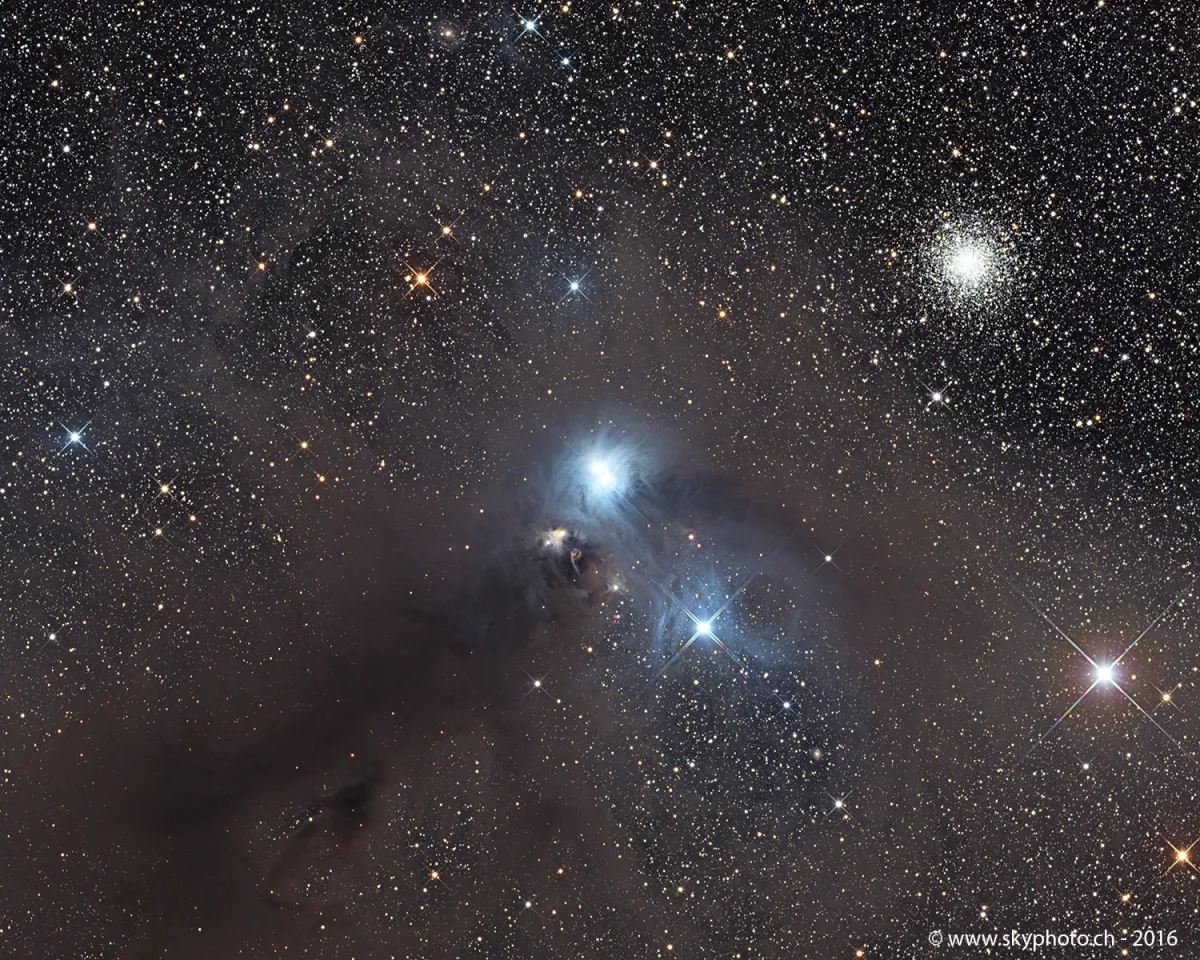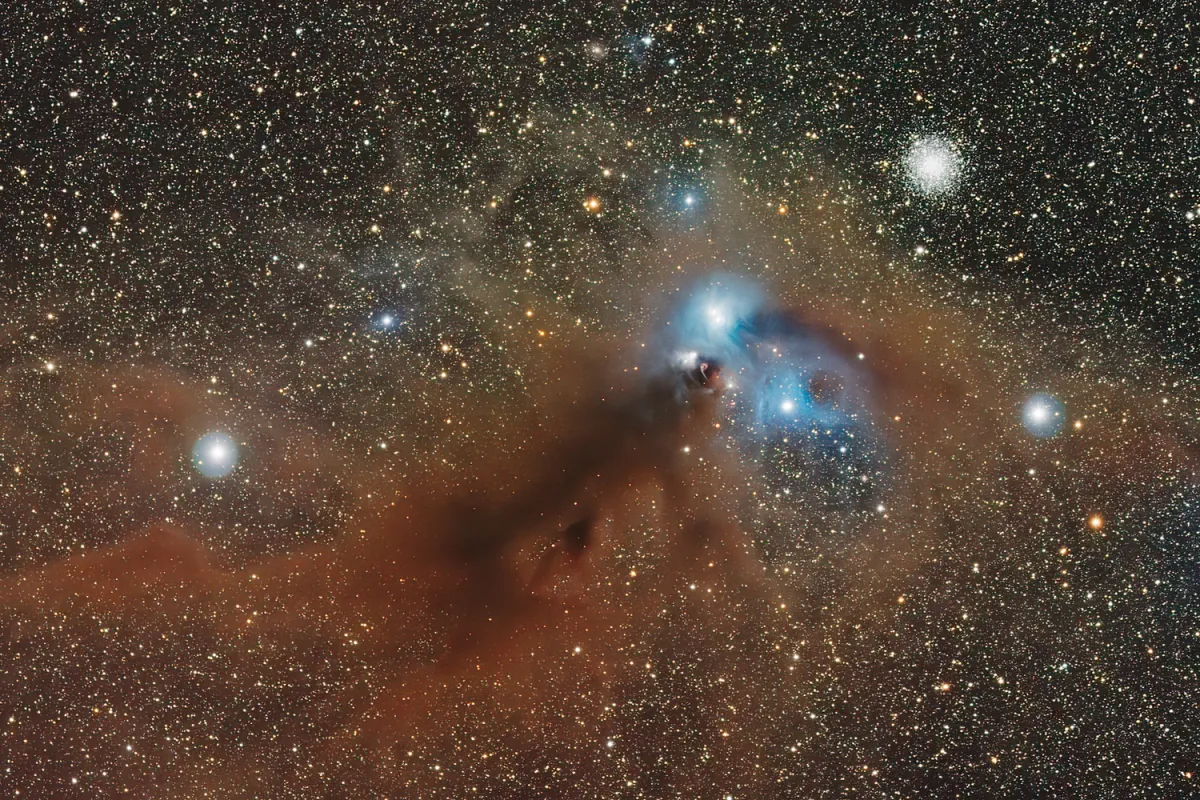R CrA Nebula NGC 6729 & Globular Cluster NGC 6723


History
The globular cluster NGC 6723 was discovered on 2 June 1826 by the Scottish astronomer James Dunlop using the self-built 9-inch reflector at Parramatta observatory near Sydney, Australia. Based on six observations he listed it as number 573 and summarized his description as follows: «A beautiful bright round nebula, about 3.5' diameter, moderately and gradually condensed to the centre. This is resolvable. The moderate condensation, and the bluish colour of the stars which compose it, give it a very soft and pleasant appearance. This is rather difficult to resolve, although the condensation is not very great.» [50]
In October 1860 German astronomer Julius Schmidt observed this area using the 6.2-inch Plössl refractor at the Athens Observatory and discovered the two bright reflection nebulae NGC 6726 and NGC 6727 around the stars TY CrA and HD 176386. On 15 June 1861 he discovered another nebula (NGC 6729) around star TY CrA. [364]
Nebula IC 4812 surrounding the two stars HD 176269/176270 was discovered on 4 August 1899 by American astronomer DeLisle Stewart. He worked at Harvard's Arequipa station in Peru and used the 24" f/5.6 Bruce photographic refractor. [277, 364]
Physical Properties
The nebulae belong to Corona Australis Molecular Cloud and a star-forming region. The involved star R CrA is a variable Herbig Ae/Be at a distance of 128 pc. [145] Globular cluster NGC 6723 is much farther away: 8.7 kpc. [251]
| Name | RA | Dec | Type | vMag | Dim | MD | Dreyer Description | Identification, Remarks |
|---|---|---|---|---|---|---|---|---|
| NGC 6723 | 18 59 33.2 | -36 37 52 | GCL (VII) | 6.8 | 13 | 8.700 | globular, vL, vlE, vgbM, rrr, st 14…16 | h 3770; GC 4450; GCL 106; ESO 396-SC10 |
| NGC 6726 | 19 01 39.2 | -36 53 29 | RN | 9 × 7 | 0.140 | * 6·7 in F, pL, neb | GC 5935; ESO 396-N13; pair with N 6727 | |
| NGC 6727 | 19 01 42.2 | -36 52 35 | RN | 80 | 0.140 | * 8 in F, pL neb | GC 5936; ESO 396-N14; pair with N 6726 | |
| NGC 6729 | 19 01 55.3 | -36 57 28 | EN+RN | 25 × 20 | 1.300 | Var * (11…) with neb!! | GC 5937; ESO 396-N*15 | |
| IC 4812 | 19 01 03.5 | -37 03 37 | RN+* | 10 × 7 | 0.130 | * 7 inv in eL neb | ESO 396-*N12; CED 165A |
Finder Chart
The nebula complex with NGC 6729 and globular cluster NGC 6723 are located in the constellation Corona Australis, south of the teapot in Sagittarius. On 7 July they are in opposition with the Sun, but at a declination of roughly -37° they reach in Switzerland only about 5° above the southern horizon and are mostly blocked either by the Swiss Alps or the lightpollution dome of Milano. Maybe one can see it on a clear, dry night from the top of a mountain while whole Italy has a power outage.
